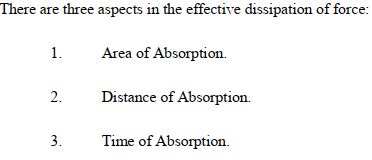ANALYSIS OF BIOMECHANICAL PERSPECTIVE OF SPORTS INJURY
Abstract
Many sportsmen today participate in highly organized sports programs that involve regimented yearround repetitive training. The excessive training has led to an increased incidence of overuse musculoskeletal injuries. Sports scientists and sport physicians have dealt with sports injuries in athletes for many years and, on the basis of their experience, they have developed guidelines to treat and to try and prevent these injuries in mechanical viewpoint. The purpose of this article is to provide a biomechanical perspective of sports injuries in athletes. Basic tissue and gross movement mechanics principles are used to identify movement factors that may influence athletes to an overuse injury. Analytical methods was used for this article by reviewing relevant publications, primarily based on the online sports medicine journals available on Internet, Wikipedia, Elsevier, PubMed and other open access journal. Biomechanics technology and approaches should be used to help enhance performance in sports and to avoid injury. Good understanding of biomechanics may be used in the sports to establish safe and effective training guidelines for sportsman.
Downloads
References
2. Aaron, D. J., and Laporte, R. E. (1997) Physical activity, adolescence, and health: an epidemiological perspective. In: Exercise and Sport Sciences Reviews, Vol. 25, J. O. Holloszy (Ed.). Baltimore: Williams & Wilkins, 1997, pp. 391–406.
3. Carl J. Payton and Roger M. Bartlett (2008) Biomechanical Evaluation of Movement in Sport and Exercise, Routledge, 2, Abingdon, Oxon OX14 4RN
4. Dalton, S. E. (1992) Overuse injuries in adolescent athletes. Sports Med.13:58–70, 1992.
5. Haddon., W.J (1973) Energy damage and the 10 countersure sure stratgies, Human Factors 15 (4):355-366
6. Hawkins, D. (2000)A non-invasive approach for studying muscle- tendon interactions invivo. In: Skeletal Muscle Mechanics: From Mechanisms to Function, W. Herzog (Ed.). New York: John Wiley & Sons, 2000, pp. 305–326.
7. Jensen, R. K. (1987) Growth of estimated segment masses between four and sixteen years. Hum. Biol. 59:173–189, 1987.
8. Jensen , R., and G. Nassas. (1988) Growth of segment principal moments of inertia between four and twenty years. Med. Sci. Sports Exercise. 20:594–604, 1988.
9. Jo´Zsa, L., and P. Kannus. (1997) Human Tendons: Anatomy, Physiology, and Pathology. Champaign, IL: Human Kinetics, 1997, pp. 98–111 and 178–179.
10. Laros, G. S., C. M. Tipton, and R. R. Cooper.(1971) Influence of physical activity on ligament insertions in the knees of dogs. J. Bone Joint Surg. Am. 53:275–286, 1971.
11. Maffulli, N. (1990) Intensive training in young athletes: the orthopedic surgeon’s viewpoint. Sports Med. 9:229–243, 1990.
12. Malina, R. M., and C. Bouchard. (1991) Growth, Maturation, and Physical Activity. Champaign, IL: Human Kinetics, 1991, pp. 128–130 and 190–193.
13. Marchi, A. G., D. Di Bello, G. Messi, and G. Gazzola. (1999) Permanent sequelae in sports injuries: a population based study. Arch. Dis. Child. 81:324–328, 1999.
14. Michelli, L. J., and J. D. Klein.(1991) Sports injuries in children and adolescents. Br. J. Sports Med. 25:6–9, 1991.
15. Micheli, L. J., and A. F. Fehlandt. (1962)Overuse injuries to tendons and apophyses in children and adolescents. Clin. Sports Med. 11:713–726, 1992.
16. National Youth Sports Foundation. Did you know?, Side Lines 9:2, 2000.
17. Noyes , F. R., P. J. Torvik, W. B. Hyde, and J. L. Delucas. (1974) Biomechanics of ligament failure, II: an analysis of immobilization, exercise, and reconditioning effects in primates. J. Bone Joint Surg. Am. 56:1406–1418, 1974.
18. Noyes, F. R. (1977) Functional properties of knee ligaments and alterations induced by immobilization: a correlative biomechanical and histological study in primates. Clin Orthop. 123: 210–242, 1977.
19. Shaw, Dananjay, (2000) Mechanical Basis of Biomechanics, Sports Publication, Ashok Vihar, Delhi, 2000.
20. Van Mechelen, W, Hlobil, H, and Kemper, H.C. (1992). Incidence, severity, aetiology and prevention of sports injuries. A review of concepts Sports Med.14: 82–99.1992
21. Whiting. W and Zernicke, R (1998) Biomechanics of Musculoskeletal Injury, Human Kinetics; 1st edition (1998)















